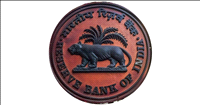Well done, Mr. Sinha
By Kiron Kasbekar | 28 Feb 2001
Indian business couldn’t have expected a better budget this year. The expressions of welcome from businessmen following Union finance minister’s budget speech in Parliament were ample evidence of this. The only catch may be whether the government can pull off the reform actions it has announced. Much as they are needed, even desperately needed, the cussed nature of populist Indian politics may throw a spanner in the works.
Overall, in terms of his fiscal proposals, the finance minister has managed to walk the rope and push for growth while slashing several taxes, and to prevent the fiscal deficit from rising further. What he needs to be praised for is not the nitty-gritty rate changes but the broad direction of reform that he has resolved to continue and strengthen.
Not everybody will be happy. The finance minister has taken some much-needed steps to reduce administrative costs, which will hardly endear him to government employees. Leave travel concessions for government employees have been frozen for a while, and they will have to pay more for some of their perks.
He has also, in keeping with prime minister Atal Behari Vajpayee’s earlier statement, announced a 10 per cent reduction in government employment over the next five years. The government has committed to implement the recommendations of the Expenditure Reforms Commission by July 31, 2001. Mr Sinha has set the tone by announcing downsizing of his own ministry.
The other highlights are an attempt to accelerate investment in the infrastructure, a push for a low interest rate regime, encouragement of the capital market, and rationalising of indirect tax rates, and a boost for industrial restructuring.
One of the biggest hurdles to growth in India is its weak infrastructure. The budget proposals seek to encourage investment in infrastructure. Mr Sinha has given core infrastructure projects such as roads, highways, rail systems, water supply, sanitation and irrigation a 10-year tax holiday in their first 20 years. Other infrastructure projects in the airport, port, inland waterway, industrial park, and power generation and distribution will get 10-year tax holiday out of their initial fifteen years.
Companies in the telecom sector have been given a reprieve through a five-year tax holiday with retrospective effect and a 30 per cent tax deduction offer that was available only to those that commenced operations before 31 March 2001.
The finance minister has reduced the three rates of special excise duty to a single rate of 16 per cent. Mr Sinha expects that 80 per cent of the entire excise revenues will now come from the CENVAT rate of 16 per cent and 17 per cent from the combined rate of 32 per cent. This simplification and rationalisation combined with the attempt to eliminate discretionary exemptions, was long overdue, and it’s good that Mr Sinha decided to continue and straighten this process started by his predecessors.
The automobile industry should be doubly happy. Excise duties on cars and two-wheelers have been slashed, and a heavy 180 per cent duty protection given against imports of second hand vehicles. Some companies may have expected more, like Hero Honda, which wanted equally heavy duties against the imports of new vehicles, especially two-wheelers, where cheap Chinese imports are seen as a major threat to Indian manufacturers. That has not happened.
The minister has also offered incentives for research and development in select areas like biotechnology. The pharmaceuticals industry is happy.
Capital market players have many reasons to cheer Mr Sinha’s proposals:
- The reduction of personal tax rates with the withdrawal of surcharges and the enhancement of deductions in respect of self-occupied property as well as rented property will leave more money in the hands of individuals, for consumption or investing.
- Interest rates are being pushed downward, encouraging savings to shift to equities – the finance minister has reduced administered interest rates on provident fund and special savings schemes by 1.5 percentage points and on central government loans to states by 0.5 percentage point.
- Dividend tax has been slashed to 10 per cent.
- Capital gains tax exemption has been given on condition of investment of the gains in primary issues.
- The limit for investment by foreign institutional investors has been raised to 49 per cent of a company’s equity.
- The 10 per cent corporate tax surcharge on companies has been removed.
Mr Sinha seems to have been emboldened to reduce tax rates by increased compliance resulting in 60.39 per cent growth in direct tax revenues in the past two years coupled with the doubling of the number of assessees since March 1998 to 23 million this year.
Some of the trickiest proposals relate to industrial restructuring. Mr Sinha has announced the government’s intention to allow units employing less than 1,000 workers to implement layoffs, retrenchments or closures without prior government approval. He seeks to mitigate the hardship to workers that this will cause by instituting group insurance cover and increased separation compensation. That may be a problem for companies – Mr Sinha has raised the statutory compensation level from 15 days for every year of service to 45 days – but they will get much-needed flexibility with the change.
The finance minister also intends to provide better protection to contract labour.
The finance minister has also announced the government’s plan to repeal the Sick Industrial Companies (Special Provisions) Act, and to make it easier to wind up companies.
The finance minister expects to hold the fiscal deficit at 5.1 per cent, and finance ministry officials point out that the government’s performance in the current year gives credibility to the estimate.
The privatisation target has been fixed at Rs 12,000 crore, and the government says it is more confident of succeeding in the new fiscal year than it was in the past. The problem is not merely whether the opposition will allow it to meet this target. As the Balco case shows, its own constituents and supporters are not convinced about privatisation.
So let’s wish the finance minister well, and hope the prime minister can at least get his alliance partners to toe the line if not to neutralise some of the opposition antics on reform.






























